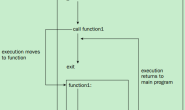1. 算法简介 Catmull-Rom Spline算法是一种插值算法,能够在目标点之间插值生成一条平滑的曲线 算法数学原理不在此介绍 算法特点 什么情况下,可以使用Catmull-Rom Spline算法呢——平滑机器人或无人车的路径 算法要求: 有一系列路径点 路径点大于4个 想要在路径点之间插值生产若干个路径点 生成的轨迹是平滑的 2. C++实现 不说废话上代码,我把核心算法写成了CatMullRomSpline.h头文件,main.cpp是调用示例 算法要求:输入点数 > 4 CatMullRomSpline.h
#include <iostream>
#include <vector>
#include <map>
#include <math.h>
#include <opencv2/core/core.hpp>
#include <opencv2/highgui/highgui.hpp>
#include <opencv2/imgproc/imgproc.hpp>
#include <opencv2/opencv.hpp>
using namespace std;
using namespace cv;
double tj(double ti, Point2d Pi, Point2d Pj){
double t = sqrt(sqrt( pow((Pj.x - Pi.x),2) + pow((Pj.y - Pi.y),2)) ) + ti;
return t;
}
vector<Point2d> catMullRomSpline(vector<Point2d> inputPoints){
// 每两个点中间插入多少个点
int numSpace = 100;
int numPoints = inputPoints.size();
if (numPoints > 4){
int numSplines = numPoints - 3;
std::vector<Point2d> result;
std::vector<Point2d> spline;
for (int i = 0 ; i<numSplines ; i++){
// 从第0个点开始,每次取4个点
std::vector<Point2d>::const_iterator first = inputPoints.begin() + i;
std::vector<Point2d>::const_iterator last = inputPoints.begin() + i+4;
std::vector<Point2d> inputPoints_part(first, last);
// 这时输入点数为4,重新调用函数,进入else分支
spline = catMullRomSpline(inputPoints_part);
// spline 为插值出的点
std::vector<Point2d>::const_iterator result_first = spline.begin();
std::vector<Point2d>::const_iterator result_last = spline.begin() + spline.size() ;
std::vector<Point2d> result_part(result_first, result_last);
// 每次的结果spline,全部放入result结果中
result.insert(result.end(), result_part.begin(), result_part.end());
}
// 返回最终的结果
return result;
}
// 当输入点数是4个时
else if (numPoints == 4){
// 输入的四个点
Point2d P0, P1, P2, P3;
P0.x = inputPoints[0].x;
P0.y = inputPoints[0].y;
P1.x = inputPoints[1].x;
P1.y = inputPoints[1].y;
P2.x = inputPoints[2].x;
P2.y = inputPoints[2].y;
P3.x = inputPoints[3].x;
P3.y = inputPoints[3].y;
double t0 = 0;
double t1 = tj(t0, P0, P1);
double t2 = tj(t1, P1, P2);
double t3 = tj(t2, P2, P3);
// 可以理解为点与点之间的间隔
double linespace = (t2 - t1)/numSpace;
double t = t1;
vector<Point2d> C;
while( t <= t2){
double A1_x = (t1-t)/(t1-t0)*P0.x + (t-t0)/(t1-t0)*P1.x;
double A1_y = (t1-t)/(t1-t0)*P0.y + (t-t0)/(t1-t0)*P1.y;
double A2_x = (t2-t)/(t2-t1)*P1.x + (t-t1)/(t2-t1)*P2.x;
double A2_y = (t2-t)/(t2-t1)*P1.y + (t-t1)/(t2-t1)*P2.y;
double A3_x = (t3-t)/(t3-t2)*P2.x + (t-t2)/(t3-t2)*P3.x;
double A3_y = (t3-t)/(t3-t2)*P2.y + (t-t2)/(t3-t2)*P3.y;
double B1_x = (t2-t)/(t2-t0)*A1_x + (t-t0)/(t2-t0)*A2_x;
double B1_y = (t2-t)/(t2-t0)*A1_y + (t-t0)/(t2-t0)*A2_y;
double B2_x = (t3-t)/(t3-t1)*A2_x + (t-t1)/(t3-t1)*A3_x;
double B2_y = (t3-t)/(t3-t1)*A2_y + (t-t1)/(t3-t1)*A3_y;
double C_x = (t2-t)/(t2-t1)*B1_x + (t-t1)/(t2-t1)*B2_x;
double C_y = (t2-t)/(t2-t1)*B1_y + (t-t1)/(t2-t1)*B2_y;
C_x = floor(C_x);
C_y = floor(C_y);
C.push_back( Point2d( C_x, C_y ) );
t = t + linespace;
}
// C 是输入4个点中,第2个点和第3个点之间的插值点
return C;
}
// 保证输入点药大于4个
else{
cout<<"The number of input points must > 4"<<endl;
vector<Point2d> nopoint;
nopoint.push_back(Point2d(0,0));
return nopoint;
}
}
main.cpp
#include <iostream>
#include <vector>
#include <map>
#include <math.h>
#include <opencv2/core/core.hpp>
#include <opencv2/highgui/highgui.hpp>
#include <opencv2/imgproc/imgproc.hpp>
#include <opencv2/opencv.hpp>
#include "CatMullRomSpline.h"
using namespace std;
using namespace cv;
int main(int argc,char*argv[])
{
vector<Point2d> input;
input.push_back(Point2d(-510, -520));
input.push_back(Point2d(50,50));
input.push_back(Point2d(300,250));
input.push_back(Point2d(550,200));
input.push_back(Point2d(800,600));
input.push_back(Point2d(900,900));
// 调用算法
vector<Point2d> Output = catMullRomSpline(input);
cout<<"一共插值了 "<<Output.size()<<" 个点"<<endl;
// 画出来
Mat img(2000, 2000, CV_8UC3, Scalar(255, 255, 255));
for (int i = 0 ; i< input.size(); i++){
int x = 1000 + input[i].x ;
int y = 1000 - input[i].y ;
circle(img, Point2d(x, y),1, Scalar(0, 0, 255), 15, 8);
}
for (int i = 0 ; i< Output.size(); i++){
int x = 1000 + Output[i].x ;
int y = 1000 - Output[i].y ;
circle(img, Point2d(x, y),1, Scalar(0, 255, 0), 8, 8);
}
imshow("line fitting", img);
waitKey(0);
return 0;
}



